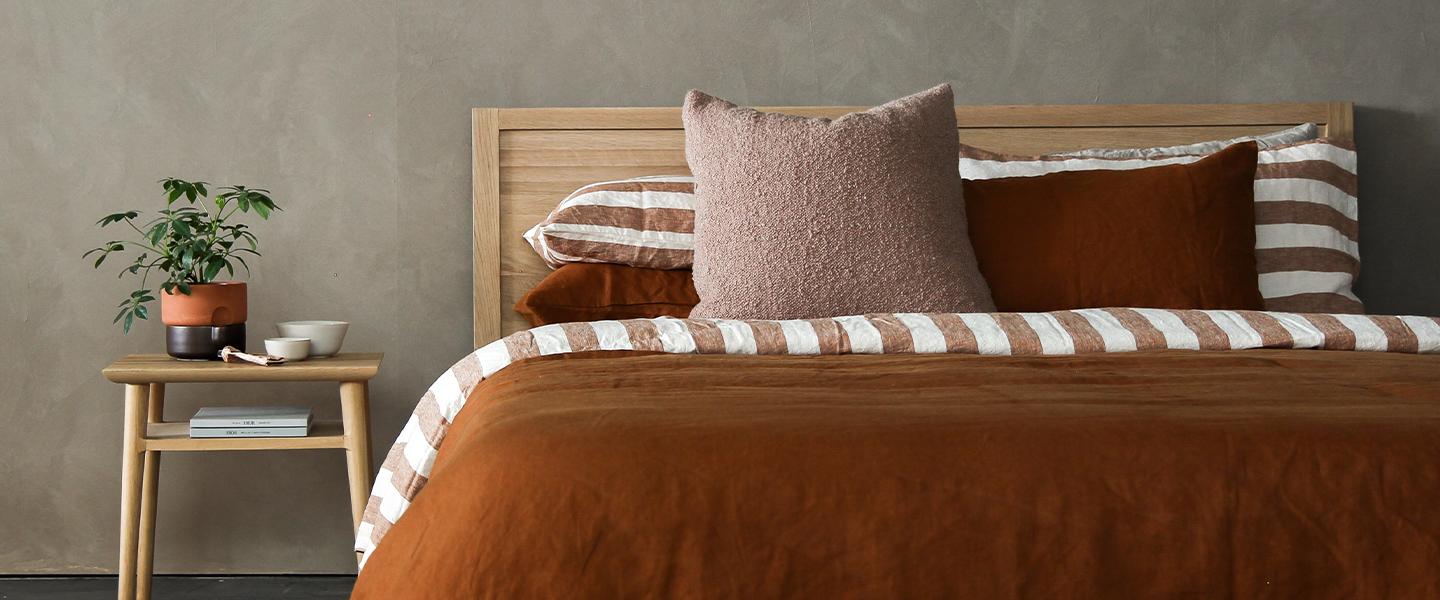How to Store Bedding: Storing Duvets, Pillows and More
If you love your bed, you also love your bedding. If you love your bedding, you will want it to be stored in the best way possible.
And there's more to storing bedding than meets the eye; long gone are the days of chucking your duvet into any old wardrobe!
In this guide, we explain how to store your bedding at home, covering expert advice for specific components of your night’s sleep and how best to care for them.
The benefits of storing bedding
Storing bedding neatly and adequately is something everyone should do, not just the exceptionally home-proud readers amongst us! It may seem as simple as keeping your home tidy, but there are more benefits than first meet the eye regarding proper storage.
Let's take a look.
- Save space: A tidy home is a happy one! Proper storage looks clean and tidy, making your home more aesthetically pleasing and organised.
- Prevent dust: Wrapping your bedding in proper storage can stop dust from gathering on it. This makes it cleaner and avoids the chance of allergens disturbing you when it comes time to hit the hay.
- Keep bedding sets smelling fresh: Good bedding storage will keep your sets protected, ensuring your bed sheets smell and feel fresh.
- Having summer and winter bedding: If you have different types of bedding for the seasons, keeping them stored properly will mean you know exactly where they are when the time comes. No more stress, rummaging around your linen closet to find your winter duvet!
- Having extra bedding for guest bedrooms: If you're lucky enough to have a guest bedroom, you'll have more bedding to work with. Proper storage will save space and fuss when a guest comes to visit.
Now we’ve discussed the benefits, let’s look at some creative ways to store bedding so you can rest easy.
How to store bedding
Here, we'll go through some of the best ways to store different types of bedding curated by our bedding experts.
How to store duvets
There are many ways people like to store duvets, be it by folding them carefully and placing them into a dry cupboard or using designated duvet storage bags.
The key to storing them is to keep them neatly folded in a place where they won't be provoked. If you're struggling for space, vacuum-sealed bags offer a great solution. Check out our dedicated guide on how to store duvets for more information.
How to store pillows
Pillows can be stored safely and decoratively in things like an ottoman*, a pillow trunk or storage pillow shelves.
For those with nifty bedframes, under-bed storage can make for a fantastic place to store pillows and allow easy access for those nights when you need another pillow.
If you’re not sure how many pillows should you sleep with, it pays to find out: your body will thank you!
*An ottoman is a piece of furniture used for storage, they generally have neither backs nor arms. They are commonly styled into an upholstered low couch or a small cushioned seat used as a table, stool, or footstool, often appearing at the foot of beds.
How to store mattress toppers
A mattress topper can be an absolute lifesaver for sensitive sleepers, so you need to look after them.
Firstly, ensure your mattress topper is clean. This will help get rid of any bacteria or dirt that can cause issues later down the line. From here, you'll want to roll it up nicely and tightly to use as little space as possible.
When looking to store it, pick somewhere dry and cool. For people who live in a hotter place, wrapping the topper in a plastic bag will help keep any unwanted air and moisture away.
How to store bed linen
Your bed linen is the face of the show, so it needs to be stored somewhere clean and safe.
Under-bed storage cases, a spare drawer or an ottoman are all great places to store bed linen. Storing them close to the bed makes sense, as you'll likely need to access them much more often than a seasonal duvet (summer or winter).
The sheets must be folded and placed in order, where matching sets are together. Everybody knows the frustration of looking for that last pillowcase in the set!
How to refresh bedding after it has been stored for long periods
If your bedding hasn't been stored well, it is common for it to smell and feel a little worse for wear after a dormant period in a cupboard or wardrobe.
Here are some quick tips to make your bedding transition as satisfying as possible:
- Lavender spray: A couple of spritzes of a lavender or scented spray can leave your sheets feeling brand new.
- A quick wash: Sometimes, your bedding just needs a quick cycle in the washing machine to refresh its cleanliness.
- Hang out on the washing line: Let those sheets breathe! If they've been lying in an unventilated space for a while, they'll benefit from hanging out in the fresh air for an hour or so.
- Tumble dry: Similarly to the last point, tumble drying helps get some air through the bedding and get any loose dust moving off of it. You can also turn it down to a cold tumble setting.
Popular bedding storage ideas
Now that we've covered the specifics, we thought it would be helpful to recap some of our favourite ways to store bedding in the home.
- In a linen closet: A dedicated linen closet is a great way to have all your bedding in one place. Ensure it is tidy, dry and clean, and you're good to go!
- In a dedicated drawer space: If you've got a spare clothes drawer, these can double up brilliantly to make way for bedding. Moreover, they're nice and close to your bed, too.
- In vacuum-sealed bags: Although there's a little initial investment, vacuum-sealed bags are worth their weight in gold. You can make your storage extremely compact with the help of these nifty little bags.
- In a bedding chest or ottoman: An ottoman is a sophisticated way to store unused bedding, pillows or throws. Whilst they look great, you'll need extra space in your bedroom to fit one!
Of course, every home is different, so some of these solutions might not work for you! You'll need to assess your home and determine how best to store your bedding.
Why is it important to properly store bedding?
Beyond where the eye can see, there are some great benefits to looking after your bedding. Do your future, sleepy self a favour and look at these advantages:
- Prevent mould and mildew: Sealing your bedding in properly sealed bags will prevent moisture from lingering. This will help fight against mould and mildew, giving you a better night’s sleep.
- Keeping seasonal bedding smelling fresh when not in use: Correctly storing bedding will keep it nice and fresh over long spells. This will save time, meaning you won't have to wash bedding that's been lying in a cupboard before using it.
- Prolong the lifespan of bedding sets: Protecting your bed sheets from allergens, dust, and bacteria will help them last longer.
Have a dreamy night's sleep with Sleep Seeker
Here concludes our lesson on how to store your bedding; you deserve a well-earned rest.
At Sleepseeker, we know a thing or two about getting the best night's sleep possible, so whether you need a winter duvet, a luxury pillow or a spellbinding mattress topper, we've got you covered.
Got something on your mind? We're always here to talk about all things sleep, so get in touch if something is keeping you awake at night.
FAQs
How do you store bulky bedding?
If you’re looking to store some big bedding, vacuum-sealed bags are ideal for storing bulkier items, such as duvets and thick blankets.
How do I keep stored bedding smelling fresh?
You can separate bedding into two parts when looking at how to store it to keep it smelling fresh.
- Firstly, you need to pick somewhere that is cool and dry. This will prevent any moisture from creating unpleasant smells in your bedding.
- Secondly, you could scent the storage place itself. If it's a linen wardrobe, for example, leave an essential oil diffuser nearby to leave a lasting fresh scent on the bedding.
What is the best way to store a duvet?
If you're looking for a way to store a duvet to ensure it stays clean and takes up as little room as possible, we'd recommend vacuum-sealing it. This will preserve it in a protective layer and keep it fresh for subsequent use.
What's trending now...
-
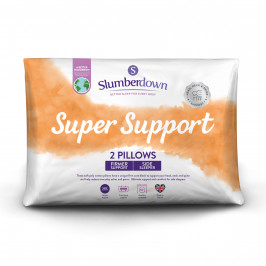
Slumberdown Super Support Firm Support Side Sleeper Pillow, 2 Pack
£12.00
Shop Now -
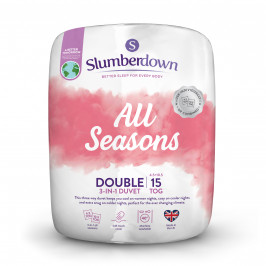
Slumberdown All Seasons 3-in-1 Combi 15 Tog (10.5 + 4.5 Tog) Double Duvet
£30.00
Shop Now -

Slumberdown Wonderfully Warm Dual Control Electric Blanket - Double
£77.00
Shop Now -
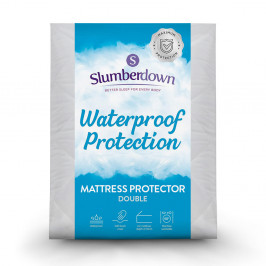
Slumberdown Waterproof Mattress Protector - Double
£17.50
Shop Now -

Slumberdown Sleep Soundly Mattress Topper, Single
£22.00
Shop Now -

Slumberdown Paws for Slumber Grey Pet Bed, Extra Large
£49.50
Shop Now -

Slumberdown Paws for Slumber Medium Pet Bed Spare Cover, Grey
£17.00
Shop Now -

Slumbalux Hollowfibre Toy Stuffing Bag, 2 KG
£17.00
Shop Now -

Slumberdown Anti Allergy Pillow Protector, 2 Pack
£15.00
Shop Now -

Slumberdown Unwind Outside Endless Lazing Waterproof Blanket, Light Green
£46.50
Shop Now -
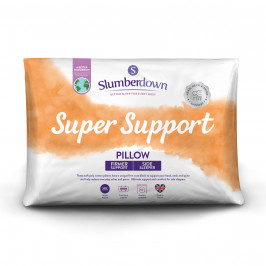
Slumberdown Super Support Firm Support Side Sleeper Pillow
From: £12.00
Shop Now -
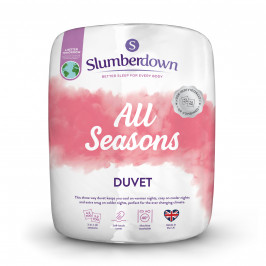
Slumberdown All Seasons 3-in-1 Combi 15 Tog (10.5 + 4.5 Tog) Duvet
From: £25.00
Shop Now -
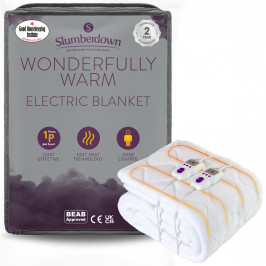
Slumberdown Wonderfully Warm Electric Blanket
From: £47.00
Shop Now -
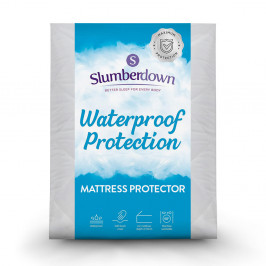
Slumberdown Waterproof Mattress Protector
From: £16.50
Shop Now -

Slumberdown Sleep Soundly Mattress Topper
From: £22.00
Shop Now -

Slumberdown Paws for Slumber Extra Large Pet Bed
From: £49.50
Shop Now -

Slumberdown Paws for Slumber Medium Pet Bed Spare Cover
From: £17.00
Shop Now -

Slumbalux Hollowfibre Toy Stuffing Bag
From: £10.00
Shop Now -

Slumberdown Anti Allergy Pillow Protector
From: £15.00
Shop Now -

Slumberdown Unwind Outside Endless Lazing Waterproof Blanket
From: £46.50
Shop Now -

Slumberdown Super Support Firm Support Side Sleeper Pillow, 4 Pack
£25.00
Shop Now


